L-A-D Foundation - Land Stewardship in the Missouri Ozark Highlands Since 1962
L-A-D Foundation - Land Stewardship in the Missouri Ozark Highlands Since 1962


Biological Benefits
Several studies have been completed and others are underway by researchers aimed at helping us to understand the long-term effects of management on the natural resources of our forest and woodlands. The following discussion includes reference information, and more specific detail about the references we cite can be found under publications (see our bibliography).
The Forest (Tree Species) Composition and Structure Through Time
Our own research has been the continuous forest inventory (CFI) designed to provide a representative sampling of the forest as a whole, as well as its various overstory and understory components under an uneven-aged management system using single-tree selection harvests. This continuously updated dataset, now more than 60 years old, provides one of the most interesting long-term records on the dynamics of growth and development for a forested landscape in the Ozarks.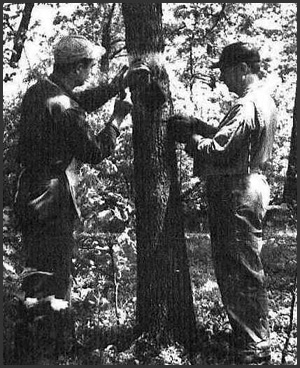
Our data shows forest-wide increases in volume per acre since 1952. These increases have been while harvests have been ongoing and indicate that managing a forest in this manner can be successful over long periods of time. In other words, both the number and size of the trees making up the forest will continue to increase.
Much of the earlier research on Ozark forests suggested that uneven-aged management was not easily applied, and furthermore, that oak seedlings required complete sunlight in order to successfully grow. A University of Missouri study completed in 1996 (Loewenstein) examined our dataset and found that the diameter distributions on the forest conformed to a scale of 0.6 of an acre. The application of uneven-aged management across an extensive landscape, under a wide variety of individual markers, and through a relatively long period of time can produce very consistent results. The best measure of the successful application of uneven-aged management is that recruitment and regeneration of the forest continues through time. Problems with regeneration within a forest would be expressed in the smaller diameters first; in fact for Pioneer Forest, basal area measurements for trees in every diameter class below 16 inches in diameter have nearly doubled since 1957.
Other interesting questions which are beginning to be answered are whether the species composition of a forest will change, and how does the distribution of various diameters change under management. Our data collection continuously monitors seven species or major groups of species: red oak (collectively black oak, scarlet oak, and northern red oak), shortleaf pine, white oak, hickory, post oak, black gum, and all other species as a separate group. From this we have learned that, with the exception of black gum, each continues their relative proportion of the forest mix. After more than 60 years of harvesting trees the original mix of forest species has not changed. Furthermore, from the standpoint of structure and character within the forest we are seeing all diameters from 5 inches to 18 inches either increase or maintain their presence. We also measure and monitor tree diameters larger than 18 inches and these have fluctuated around the initial measurement figure (see Iffrig, Trammel, and Cunningham 2004).
During the 1990's, more specific analysis of uneven-aged forest management in oak-hickory forests was conducted on Pioneer Forest. A series of projects began as a result of the database from the CFI established on Pioneer Forest in 1952. Jenkins (1992) and Jenkins and Pallardy (1993) studied oak-hickory stands and suggested that the red oak group in uneven-aged stands on Pioneer Forest were less susceptible to mortality than similar stands under other management systems elsewhere. While not exclusive to Pioneer Forest, Johnson (1992) mentions the use of single-tree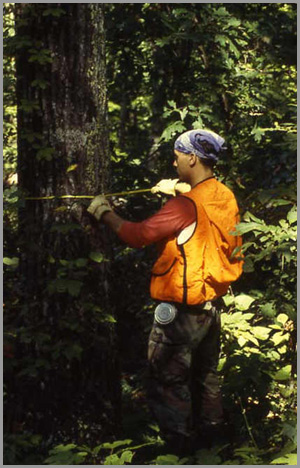 selection harvesting in his review of alternatives to clearcutting, although, at the time, only reluctantly recommending it as a prescription. Shortly after Johnson's review was completed, he and other researchers at the University of Missouri-Columbia continued to analyze the single-tree selection method, each reporting positive results. Loewenstein (1996) and Loewenstein and others (1995 and 2000) investigated age/diameter relationships, as well as long-term changes in species composition and basal area (summary of the number and size of trees per acre). Results from this series of papers clearly demonstrated the success of the method over a 50-year period. Wang (1997) and Wang and others (1996) reported on the stability of diameter distributions, confirming that the diameter distributions for scarlet oak (Quercus coccinea), northern red oak (Q. rubra), and white oak (Q. alba) conformed to the expected negative exponential diameter distribution (described by Johnson and others 2002); namely, with more trees in the small size, young age classes and fewer trees in the larger size, older age classes.
selection harvesting in his review of alternatives to clearcutting, although, at the time, only reluctantly recommending it as a prescription. Shortly after Johnson's review was completed, he and other researchers at the University of Missouri-Columbia continued to analyze the single-tree selection method, each reporting positive results. Loewenstein (1996) and Loewenstein and others (1995 and 2000) investigated age/diameter relationships, as well as long-term changes in species composition and basal area (summary of the number and size of trees per acre). Results from this series of papers clearly demonstrated the success of the method over a 50-year period. Wang (1997) and Wang and others (1996) reported on the stability of diameter distributions, confirming that the diameter distributions for scarlet oak (Quercus coccinea), northern red oak (Q. rubra), and white oak (Q. alba) conformed to the expected negative exponential diameter distribution (described by Johnson and others 2002); namely, with more trees in the small size, young age classes and fewer trees in the larger size, older age classes.
Regeneration
Single-tree selection on central hardwood sites, by its nature, is sustained by the accumulated regeneration of desirable species. The ability of oaks to accumulate in the understory has been well-documented. As Johnson and others (2002) have pointed out, the early development of a large taproot and delayed shoot growth is characteristic of all oaks. Previous research has shown that oak seedlings sprout and grow, and then die back, repeating this response for many years while building a taproot (Johnson and others 2002). Dey and Guyette (2002) offer a brief review of oak regeneration ecology, pointing out that oaks are well-adapted to repeatedly produce new sprouts from dormant buds located at the root collar. This root collar is often located beneath the soil surface and is naturally protected from such disturbances as low-intensity fire and some herbivores. With this adaptation, oak seedlings sprouted from acorns can develop beneath a forested canopy for decades, capable of rapid response to changes in light availability. Their response is to re-allocate energy from root into shoot development (Johnson and others 2002; Dey and Guyette 2002).
Each cutting cycle re-opens the canopy whereupon seedlings and stump sprouts, with well-developed taproots, are ready to capture the hole created in the canopy. Since the canopy gaps resulting from single-tree selection harvesting are small, the recruitment and regeneration present on the floor at any given time may number only a few saplings with perhaps a higher number of seedlings and sprouts. These numbers are small when compared to reproduction numbers using even-aged forest management, however the young seedlings and saplings survive in sufficient numbers to replace the correspondingly smaller number of individual trees that are removed during each harvest.
Unlike even-aged management, where establishing regeneration is a one-time event, single-tree selection harvests provide for regeneration with each entry, thereby maintaining the range of age classes characteristic of this technique of management.
Ecological Appropriateness
In the region of Pioneer Forest, evidence suggests that the highly-dissected and heavily-forested topography has reduced the frequency of fire-related disturbance. Guyette and others (2002) noted that the interval between surface fires ranged from 9.8-17 years within the forested uplands immediately north of the Current River, compared to 16-29 years for the more mesic mixed-oak forests along the river during the period 1700-1850. Thus, the 15-20 year entry period that has evolved operationally for single-tree selection harvest on Pioneer Forest roughly parallels the earlier historical frequency of disturbance from fire in the region.
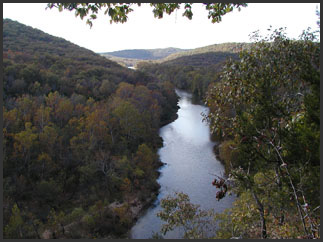 There also appear to be differences in the scale of disturbance locally versus regionally. Guyette and others (2002) noted that the Ozark Region is more than 80% forested, defined as having a percent canopy closure of more than 75%. However, they also noted that the locality of Pioneer Forest with its steep ridges and numerous streams and slopes that average 18 degrees, supported a pattern of small-scale rather than large scale disturbance. The practice of removing individual trees that is typical of management on Pioneer Forest thus approximates the historic scale of smaller disturbances that were common in this vicinity.
There also appear to be differences in the scale of disturbance locally versus regionally. Guyette and others (2002) noted that the Ozark Region is more than 80% forested, defined as having a percent canopy closure of more than 75%. However, they also noted that the locality of Pioneer Forest with its steep ridges and numerous streams and slopes that average 18 degrees, supported a pattern of small-scale rather than large scale disturbance. The practice of removing individual trees that is typical of management on Pioneer Forest thus approximates the historic scale of smaller disturbances that were common in this vicinity.
Pine and deciduous forests made up most of the pre-settlement vegetation of the Ozarks, especially in areas of greatest topographic relief (Thom and Wilson 1980). From our own long-term work, as well as publications describing this particular area of the Ozarks, the majority of Pioneer Forest is located in what was and still is the most heavily forested region of Missouri. These landscapes are and have always been forests in the truest sense.
The oak-hickory-pine forests in the Ozarks represent the oldest natural communities within the region. The biological lifetimes of dominant canopy species range from scarlet oak and black oak at 80-100 years, and northern red oak at 90-130 years, to shortleaf pine at 200-300 years, to white oak exceeding 350 years (Richard Guyette, personal communication). Based on one study (Runkle 1990) of temperate old-growth hardwood forests which reported on the spatial pattern of disturbance from a calculated annual rate of canopy gap formation, Dey and Guyette (2002) estimated that the turnover of the canopy from Runkle's study would occur in less than 250 years. Similarly, here in the Ozarks, LaVigne (2002), in a study conducted entirely on Pioneer Forest and using a life history table, calculated the statistical range of age for the forest canopy here to be between 189 to 228 years. The range LaVigne describes is comparable to a 95% confidence interval with single-tree selection harvesting as the only source of mortality for trees that form the canopy. Rather than prescribing an arbitrary canopy rotation, single-tree selection harvesting allows individual species, as well as individual trees, to fully develop and mature within the forest over rather long periods of time, while providing managers the opportunity to utilize potential mortality.
These forests, which are managed using single-tree selection harvesting, seem to provide for a more natural composition of species, indicative of a particular site's capability. Our own sampling data from the Continuous Forest Inventory show that among various canopy species those most characteristic of pre-European settlement conditions are regaining a stronger presence. Shortleaf pine and white oak, which were the focus of the earliest cutting in the Ozark Region, have shown a marked increase in the volume of sawlog trees per acre (Iffrig et al., 2004). White oak, perhaps the most impressive Ozark forest canopy species, has increased slowly, but over the past 25 years has more than doubled in its volume per acre (Iffrig et al., 2004).
Research on Birds, Salamanders, Insects, Spiders, and Other Leaf Litter Arthropods
Annand (1995) and Annand and Thompson (1997) examined migrant songbird response to managed forest treatments in southern Missouri. Sample sites from Pioneer Forest represented the single-tree selection portion of the study. While there are more than 400 bird species found in Missouri we have known for some time that Ozark forests provide a unique opportunity for certain species. For example, this study found that hooded warblers and northern parula warblers were more abundant in the single-tree selection cuts than from clearcuts, shelterwoods, or even unharvested mature sites which were studied. Bird species such as the red-eyed vireo, worm-eating warbler, and acadian flycatcher, all species commonly found in mature forest, were also abundant in the Pioneer Forest sample.
Why are these birds more commonly found here? The reasons vary, but in each case the preferences of these birds for specific forest characteristics continues to be found on these forested lands, even after they are cut. Acadian flycatchers prefer large trees, a dense understory, and a closed canopy. Red-eyed vireos prefer a closed canopy. Ovenbirds prefer a closed canopy and short regeneration height. Hooded warblers prefer a high density of smaller trees, relatively low density of large diameter trees, high shrub stem counts, and high canopy closure. Each of these last four variables fairly describes the uneven-aged forest character resulting from single-tree selection harvests.
Barber and Camilo (unpublished manuscript) studied these same species from six sites. All of their research plots were on Pioneer Forest, spanning a 10-year period from the most recent harvest. With one exception, indices of diversity differed little between sites. The implication here is that changes in the forest from single-tree selection harvests differed little and showed little observable change in bird species diversity from areas cut within one year to those cut 10 years earlier.
Salamanders are the most abundant vertebrate animals. Their annual production of biomass exceeds that of birds or small animals. While birds are more mobile, salamanders are not, therefore more directly reflecting the quality of the immediate site. In the late 1990's a portion of a study (Herbeck 1998 and Herbeck and Larsen 1999) investigating salamander response to various forest management practices showed that salamander populations were reduced to very low numbers when mature forests had been intensively harvested. Estimated mean densities per hectare were 1422 for mature forests and less than 15 for clearcuts. Removal of the forest canopy decreases moisture and increases ground temperature. Complete or nearly complete removal of the forest canopy (clearcutting/even-aged management) shortens forest development to a period of 75-120 years and prevents development of the structure associated with older forests (uneven-aged management) such as larger trees, accumulation of down wood, and the development of high density foliage layering.
A study (San Diego 2001) compared arthropod communities from three different forest management treatments: one where all the trees were cut and removed nearly forty years ago, with vast canopy openings; a forest management site on Pioneer Forest where single tree selection harvests preserve continuous canopy coverage; and a third site, also on Pioneer Forest, where no trees have been cut or removed. This study determined how different forest management regimes influence forest structure and arthropod community composition at various levels of spatial scale.
San Diego's results indicate that arthropod specie's richness and abundance are significantly higher in the single-tree selection sites than in the clearcut areas sampled elsewhere. In fact for abiotic variables measured in this study the scale of variance between the clearcut and all other areas measured was one to two orders of magnitude greater. Furthermore, these results echo the suggestion that single-tree selection harvests may be a management regime more similar to the historical disturbance regime in the region.
Jeffries (2004) investigated "whether forest age influences characteristics of the herbivorous insect community of white oak trees." A portion of Jeffries' study was conducted on the old-growth forest of Current River Natural Area, owned by the L-A-D Foundation and surrounded by the managed lands of Pioneer Forest. Evidence from this study suggests that the "richness, abundance, and community structure of white oak herbivores are influenced by variation in age, structure, and relative abundance of plant species, and abiotic conditions. Oak herbivore species richness and abundance continued to increase with forest age (200+ years), certainly well beyond the rotation period for forests under more typical even-aged management. In other words, the size of the forest may not be as important as the average size or age of the trees within it. Allowing individual trees to increase in size and age across the forested landscape may be the most important conservation influence.
Ecological Management Areas
Pioneer Forest includes certain tracts that reflect exemplary and restricted or scarce conditions of natural vegetation, soil, or geology; where maintenance of such significant ecological conditions requires active stewardship programs over and above routine Pioneer Forest management. In selected cases, such stewardship is considered to be worthwhile and of significant benefit to the forest, the region, and the state. These areas are designated as Ecological Management Areas. In such areas Pioneer’s traditional method of selective tree harvest is modified and usually adapted to maintain specified conditions of ecological interest. Normally, some harvest of timber is part of the management regime.
Specific goals vary from site to site, but are designed to maintain or restore significant natural communities as reflected in overstory character, canopy species, native woody and herbaceous understory, and groundcover conditions. Controlled burning has proven beneficial, and is being used periodically. Various methods of thinning are also used to encourage particular landscape conditions.
Each of these areas will be an on-going source of information about natural history in Missouri and the Ozarks, and enhance overall scientific and recreational values of Pioneer lands.
Research is encouraged on these areas and may provide valuable comparative analysis along with research on Pioneer’s traditional single tree selection forest management program
The L-A-D Foundation has designated the Pine-Oak Woodland Ecological Management Area within Pioneer Forest. This consists of:
- The Virgin Pine/Randolph Tract, 500 acres. Bordering Highway 19 this area is part of the once extensive shortleaf pine woodlands, and is where the pine-dependent red-cockaded woodpecker was last recorded in the state. This is the best and most extensive area of Pioneer where pine is or was a co-dominant species. Management will emphasize the long-term piney character of the tract.
- Pineknot Tract, Cooperatively Managed with the USFS Mark Twain National Forest, 330 acres. This tract on Pioneer Forest is within one of the first sizeable areas proposed by the Mark Twain for shortleaf pine woodland restoration. Pioneer Forest had an isolated half-section of its land within the project area and agreed to participate, along with several other private landowners.
In addition, two other L-A-D owned properties are designated as Ecological Management Areas:
- Tall Larkspur Ecological Management Areas, 85 acres in 2 units. There are two wooded hillsides where tall larkspur, a species of statewide concern, has been found. Ecological management actions here will maintain the open woodland character and restrict groundcover duff to promote favorable growing conditions for this striking and very restricted woodland plant.
- Jerktail Mountain Ecological Management Area, 1,160 acres. Thin soil and diverse bedrock conditions favor igneous and dolomite glades, along with adjacent xeric woodland and scattered forest conditions. Associated fauna adds interest and importance. This area adjoins similar acreage owned by the National Park Service as part of the Ozark National Scenic Riverways; joint stewardship programs are integral for this area. Where conditions are suitable for tree growth, timber harvest is compatible.

Giant Swallowtail on Tall Larkspur, PHOTO BY: Susan Farrington
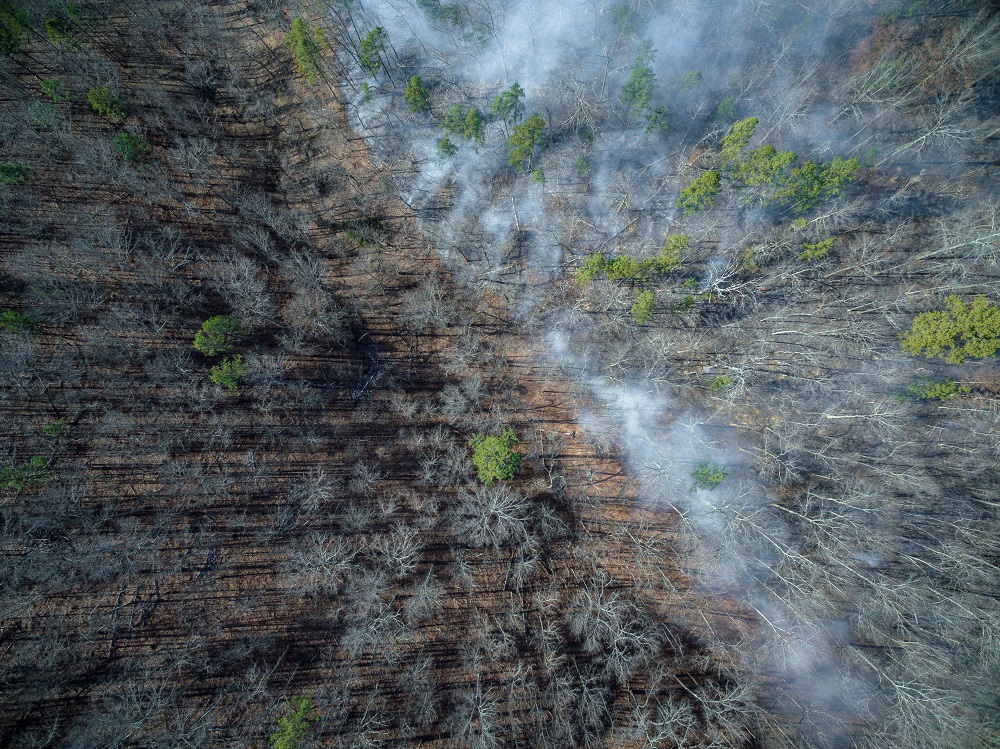
Aerial View of Prescribed Fire Conducted at Pine-Oak Woodland Ecological Management Area, PHOTO BY: Kristopher D. Corbett
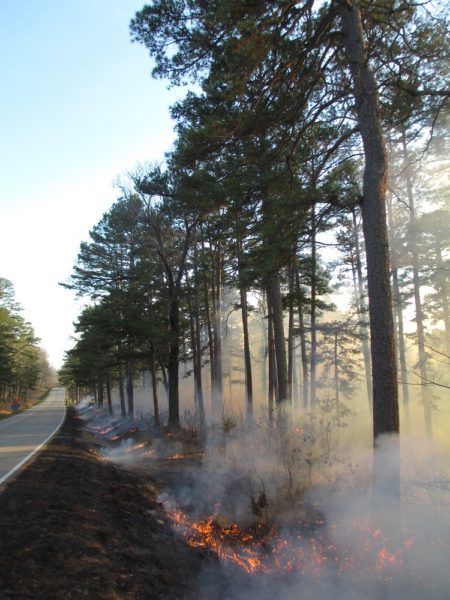
Pine-Oak Woodland Ecological Management Area, PHOTO BY: Neal Humke
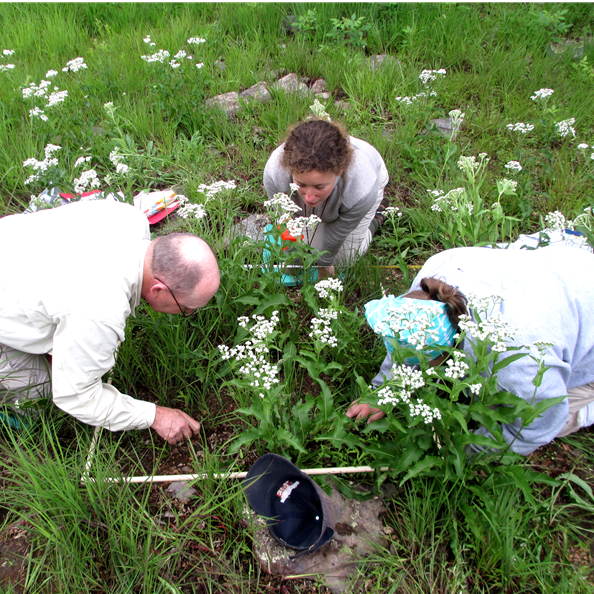
Botanical Monitoring of Glade Atop Jerktail Mountain, PHOTO BY: Neal Humke
Click above to view Pioneer Forest brochure or right click and "save as" to save.
© 2013-2023 L-A-D FOUNDATION ♦ 725 KINGSLAND AVE., SUITE 100, ST. LOUIS, MO 63130 ♦ 314-621-0230 ♦ EMAIL: INFO@LADFOUNDATION.ORG
PIONEER FOREST ♦ PO BOX 497, SALEM, MO 65560 ♦ 573-729-4641
♦ SEE PRIVACY POLICY
This site maintained by Craig Technology Consulting • 201 E. 4th St. • Salem, Missouri 65560 • PH 573.453.2322